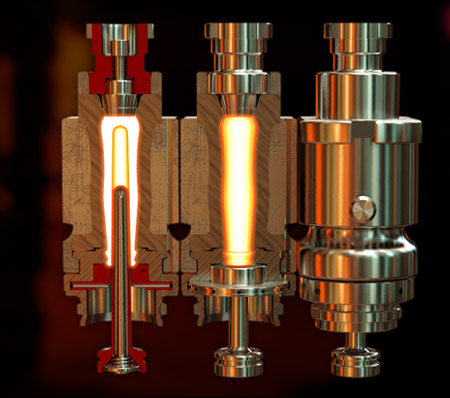Our Mission...
to provide professional educational programmes
and comprehensive technical & operational assistance

NNPB Introduction
Due to the nature of the Narrow Neck Press & Blow process, new Standard Operating Procedures (SOP) and in some cases new technology are required to produce NNPB containers successfully. With the assistance of APEGG, the difference between BB and NNPB can be understood and an action plan for the smooth introduction of the NNPB forming process can be made.
APEGG’s 5 steps for NNPB introduction:
Plant audit: A plant audit will determine the requirements in terms of technology/equipment upgrade and or training. A written report will be submitted with all relevant recommendations. Many of our customers have found this useful to determine the required investments.
Line upgrade: With the APEGG report the customer can put out for tender the requirements to the respective suppliers. The complete technology and equipment upgrade process can be managed by APEGG on behalf of the customer (from specification to NNPB production).
Mould design: For the NNPB process a different mould design is required compared to BB. APEGG provide the full mould design for any new container. In our training facility in the UK we offer mould design training courses.
Production process: Production parameters for the NNPB process must be set very tightly in all areas, e.g. glass composition, melting/conditioning, machine set-up & maintenance, mould equipment, training… APEGG assist with the adjustment of the production process to achieve the required parameters.
Training: APEGG provide structured NNPB forming, mould design, mould repair and container defect training. During our training program the requirements for the NNPB process are explained from Batch to Palletizer. The initial training is classroom based, followed by hands on training on the shop floor.
APEGG have the knowhow to assist customers with the transition from BB to NNPB.
Today the NNPB process is a standard process for producing bottles with a finish diameter up to 38mm, in some cases bottles with finishes larger than 38mm can be produced. With the NNPB process, containers with a more even glass distribution can be produced (no settle wave), making weight reductions of up to 30% possible. For the production of NRB (None Returnable Bottles), this process is the one most commonly used. Spirit and Wine bottles can also be produced with the NNPB process however there are some exceptions, particularly on wine bottles.
We have a proven track record in assisting customers with the introduction of NNPB to their plants. For each customer an individual introduction program will be formed, for details, please contact us.
To read the latest information about this service, go to Glass Open Book

